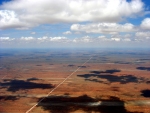Hello
Reply to bpval
Either € 18 * 000kwh = 10kwh or 180% of the gray energy spent
Sorry, I didn't understand the percentage calculation, or what it refers to?
My method (if you can call it that) simply allows you to estimate the amount of gray energy of a manufactured product
Response to Christophe and bpval
For example for the cement (little margin, no extra in the price), you buy a bag of 25 Kg at 5 euros, this means that 50 kwh were necessary for the extraction of the components, their transport to cement plant, manufacturing / processing, packaging, logistics etc ... (i.e. 5 liters of fuel oil for example)
It must of course be understood that the energy spent on site (coal cement plant?) Represents only a part of what will have been necessary. Besides the functioning of the whole system and sometimes more demanding than the simple manufacturing of the product itself.
My reasoning amounts to saying that whatever the object purchased, if we subtract the part of the price that has nothing to do with its manufacture (R&D, marketing, etc.) we only pay for energy.
Most raw materials are very expensive for extraction, processing, transport, etc.
The mine itself is worth nothing.
Even if the industry buys cheaper energy (zero-rated oil) than the individual, it bills it sooner or later.
Depending on the area, it is undoubtedly wise to apply a coefficient, but it is the order of magnitude that counts, in particular to estimate the return on "ecological" investment of one solution rather than another.
The reference to the price of electric KWh is a good average, I think.
A+




